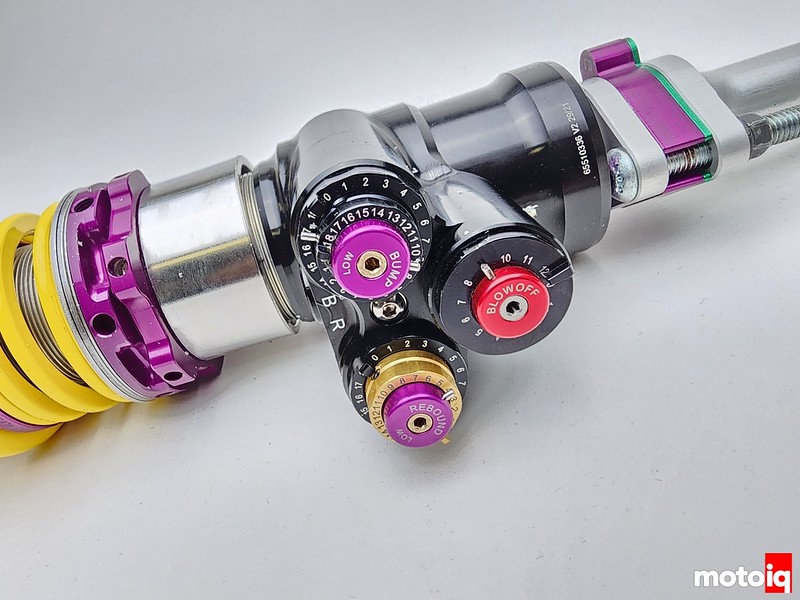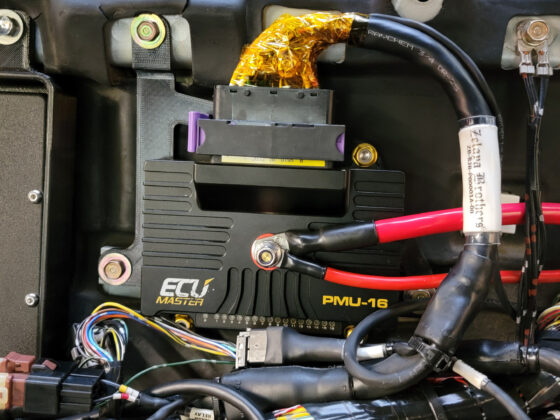
Ah, now it’s time for the third and last edition of this series on shock tuning. We are gonna talk about how to adjust 3 to 5 way adjustable shocks and how to do it without messing up your cars handling. In our experience the more knobs you have, the more ways you have to mess up your car’s handling and almost no one really knows how to adjust shocks with 3-way and more adjustments We will show you a way that you can only make your car better and you will not mess your car up unless you are really lame or don’t follow the instructions. We would like to thank KW Suspension and ST Suspension for helping us with sample shocks and creating graphics for this story.
Before starting on this article we really recommend that you first read the following and understand them.
How to Adjust Your Shocks, Part One- Single Adjustable Shocks
How to Adjust Your Shocks, Part Two- Double Adjustable Shocks
You might want to watch these youtube videos we did on the subject as well.

Having shocks with more than just basic rebound or even independently adjustable compression and rebound is a huge advantage if you know how to use the adjustments properly. If you read the previous articles, you know that low-speed compression adjustment mostly controls vehicle body motion and high-speed adjustment controls the initial response to steering input and bump response. This chart shows the typical compression damping adjustment range of a 3-way KW Motorsports shock from full hard turning both low and high-speed compression damping knobs together.

We feel that KW makes the widest range of applications with the most features for the price point. Their 3-way adjustable offerings are no exception. They have some of the most affordable with the most fitments 3-ways on the market. For high-end street use and street/track use, KW makes the 3-way adjustable Variant 4 and the V4 Clubsport. These shocks have found their way onto many of our own project cars. Above is a Variant 4 3-way adjustable shock for a Porsche 911.

The V4 features independent high and low-speed compression adjustment on the remote reservoir, with the rebound adjustment found on top of the shock shaft.

Since the V4 is a street-type shock, it features KW’s lifetime warranty and long-lasting features such as a corrosion-resistant stainless steel INOX body and a sealed bearing camber plate.




9 comments
“KW and ST Suspension also have really good baseline settings for all of their products in the enclosed instructions.”
I did email KW a couple months ago, to ask what were the default settings on my KW v3’s, and the response wasn’t that, but rather to just start at full soft and work your way up +2, until it’s too stiff, then back off -2 or -1. No defaults were listed in the manual that I could find. In fact, I found the manual of theirs rather lacking. I ended up crowd sourcing some settings, started there, and ended up with something that is 90% there to my liking… I just need more time behind the wheel now to fine tune.
That being said, thank you thus far for the excellent content on this topic and each part you’ve created. Super valuable.
Next article could be on re-valves or choosing spring rates, why you want them, and how it relates to road or track performance. e.g. I recall reading examples of “abnormally,” high spring rates that would hurt you back, but with proper valving, was perfect to match the driving profile of the car.
The reality is that on the street, you’re not tuning for a time, you’re tuning for a driver and a road.
If you have crappy roads, and an older driver, you are going to go softer.
If you have smooth roads and a younger driver you can crank up the stiffness.
One thing I will say, is chuck the sway bar on your driven wheels and do roll control through the damper/spring. Its going to really suck up the bumps that way. I think super stiff sway bars are the work of the devil.
You can also find that stuff online on their website. Usually asking people on forums, etc is less than satisfactory. What I think is odd is that OEMs think 10% more spring is a lot, I mean we can go 100% or more stiffer, and with the right stuff, it can sometimes ride pretty nicely, even on the street. I sometimes am reluctant to write about some stuff that I develop. It’s what makes me valuable and it’s stuff I have figured out. I don’t mind writing about standard best practices in racing though.
Hi Mike,
Thanks for the information as always. Just one question and this might be a little off topic but when you tune your suspension bump , ride height and droop do you disconnect the swaybar? I have seen somewhere where they disconnect the sway bar when tuning and getting the measurements on these things but I can’t make sense of the fact why you have to disconnect it when you ran it on track with it on. If you can enlighten me on this please that would be great. Thank you so much.
No., only for corner weighting.
I really do appreciate these guides; I understand there’s a lot of nuance and tricks but for talking about your bread and butter it’s great that you’re giving good useful information other than “well more than one clicker and you need a data system” or “I’d be happy to help for my hourly fee”
On the second to last and last pages, I notice you had some histograms built in Motec’s software and then others in Excel – do you have any other data analysis software packages you prefer, or do you just have some macros and workflows in Excel? I tend to live in Excel for data acquisition analysis on my day job, but I can easily see how there’s, at least in theory, faster and smoother ways to do things.
Actually it’s not excel, its AIM race studio 3. Motec seems to be less glitchy. AIM always had tons of updates and patches and stuff not working.
Oh, I see why I assumed Excel… OK thank you.
actually race studio 2